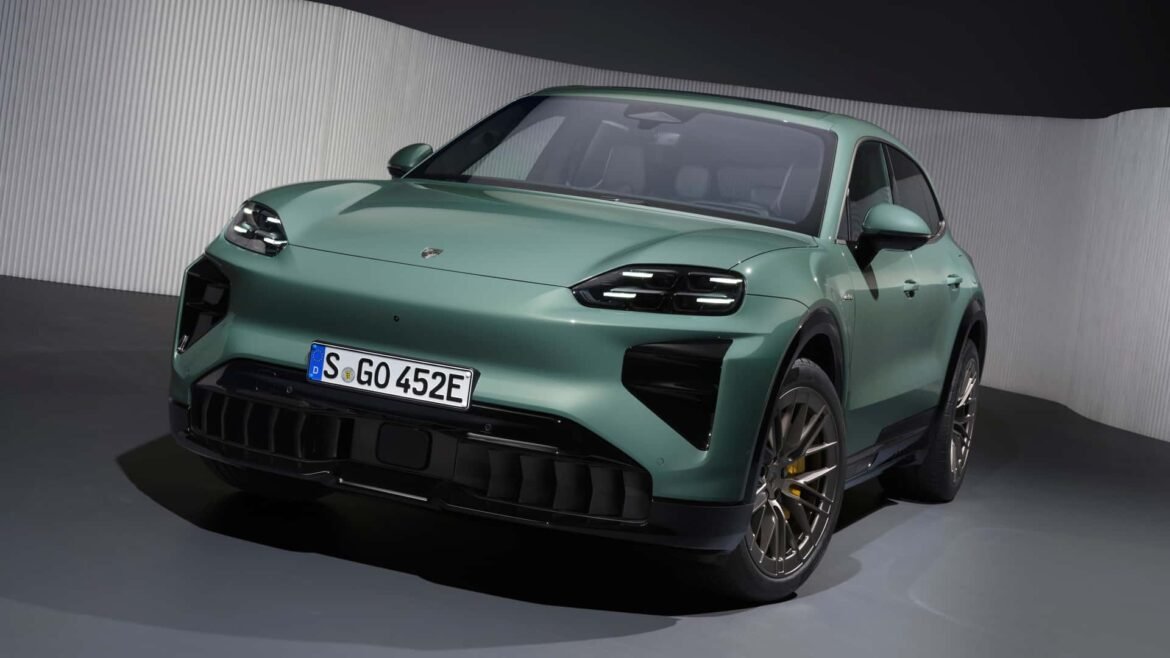Porsche continues its march toward an electrified lineup. There have been rumblings of the automaker pulling back—but today is not that day. Porsche is adding a second electric SUV to its lineup. Say hello to the 2026 Porsche Cayenne Electric. By the way, it’s the most powerful production Porsche of all time.
Two versions of the Cayenne Electric will be ready as this EV SUV rolls to market. There’s a standard version and the Cayenne Turbo Electric. Yes, we agree that adding “Turbo” to any EV trim name still feels foolish, but Porsche doesn’t care—nor do its customers.
Standard Cayenne Electric shoppers will have to settle for 402 horsepower when cruising around town. Hit the button for Launch Control mode, however, and that unlocks 435 hp and 615 pound-feet at the ready. Porsche fits a dual-motor setup into the Cayenne Electric, which means all-wheel drive is standard.
Slide behind the wheel of the Cayenne Turbo Electric, and now power can corrupt absolutely. There’s 844 hp on tap in normal driving, but when you enter Launch Control mode, you get 1,139 hp and 1,106 lb-ft of torque. Those are gargantuan power figures. Porsche claims the 0-60 mph sprint takes just 2.4 seconds, while a quarter mile can be covered in 9.9 seconds. Were you to take the Cayenne Turbo Electric to your local drag strip, you’d be almost in the zone of needing a roll cage.
| Model | Horsepower | Horsepower w/Launch Control | Battery Pack | 10 To 80% Charge |
| Porsche Cayenne Electric | 402 HP | 435 HP | 113.0-kWh | 16 Minutes |
| Porsche Cayenne Turbo Electric | 884 HP | 1,139 HP | 113.0-kWh | 16 Minutes |
83
Source: Porsche
Porsche claims serious stopping power, though, too. The Cayenne Electric is capable of absorbing power via regenerative braking at up to 600 kilowatts. In fact, Porsche states that nearly 97 of all braking can be handled by the electric motors. This spells good news for the life of your brake pads. Still, if you need to go sportier and spec your Porsche to make other Porsche fans happy, there’s, of course, a set of optional Ceramic Composite brakes for the Cayenne Turbo Electric.
The Cayenne Electric is expected to deliver a familiar and engaging driving experience. The chassis features Porsche’s Active Suspension Management system as standard kit on both models. Turbo buyers will benefit from Porsche’s Torque Vectoring Plus system, while both vehicles can also be fitted with rear-axle steering and Porsche’s Active Ride system.
Active Ride can currently be found on the Taycan and Panamera. It’s a suspension system designed to counteract the body movements you feel during normal and spirited driving. A Porsche fitted with Active Ride reduces the nose lift and dive you feel during acceleration or braking, as well as the side-to-side movements felt during cornering.
In terms of actual EV technology, the Porsche Cayenne Electric is equipped with a 113.0-kilowatt-hour battery pack. An 800-volt system sits under the skin and is capable of charging at speeds up to 400 kW. Porsche claims a 10 to 80 percent charge can take as little as 16 minutes, under the right conditions. Porsche makes no specific mention of range for the US, but the Cayenne is capable of up to 400 miles in Europe on the generous WLTP cycle.
A bit more interesting, however, is the fact that the Porsche Cayenne Electric is available with an optional wireless charging system. You park the Cayenne over a plate on the floor, and now you’re juicing up your Porsche at up to 11 kW.
Admittedly, there aren’t a ton of details on the wireless charging. Like, what happens if stuff gets in the way of the “charging field?” Do you need to keep your pets away from this “zone of magic” swirling under your car? Will it attract bats? Will the underside of your vehicle get hot? I have lots of questions. Probably most rooted nowhere near any actual science, but questions nonetheless.
Photo by: Porsche
Moving on… for now, the Cayenne Electric receives an exterior styling treatment very similar to the Macan. The rear is rounded off, the front doesn’t land as cleanly as the regular Cayenne, and the whole vehicle feels as if you asked someone to draw a Porsche SUV from memory. There are familiar elements at play, but as a whole, the Cayenne Electric begins to resemble other vehicles on the road. At least, from the profile and rear three-quarter views.
In the cabin, however, the Cayenne Electric appears to be very much a proper Porsche product. Despite the ever-growing amount of screen display area, the automaker still manages to deliver a cabin that aligns with the brand. The steering wheel feels right, the view over the hood and gauge display works well, and the seats appear primed to deliver comfort and support in just the right amounts.
Still, that is a lot of screen. The instrument cluster is a 14.3-inch OLED unit. In the center, you have a curved OLED panel that combines infotainment and HVAC controls. There’s also an optional 14.9-inch passenger display available. Porsche says that air conditioning and volume controls are analog, while most of the rest of the controls are digital.
The Porsche Cayenne Electric is slated to arrive on dealer lots towards the end of the summer of 2026. You can order one now, though. The Cayenne Electric starts at $111,350. If you prefer the most powerful production Porsche ever, however, the Cayenne Turbo Electric starts at $165,350.

